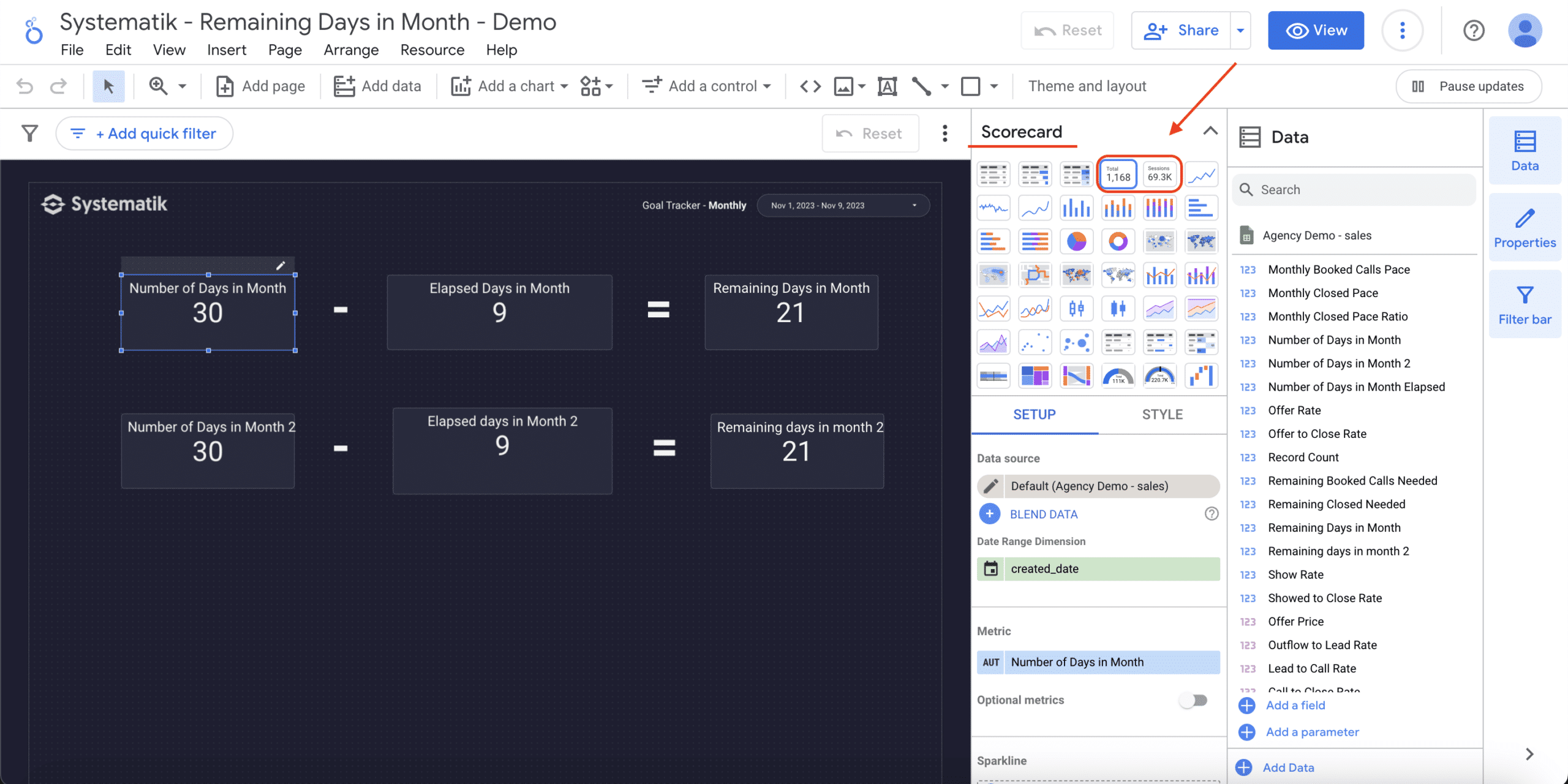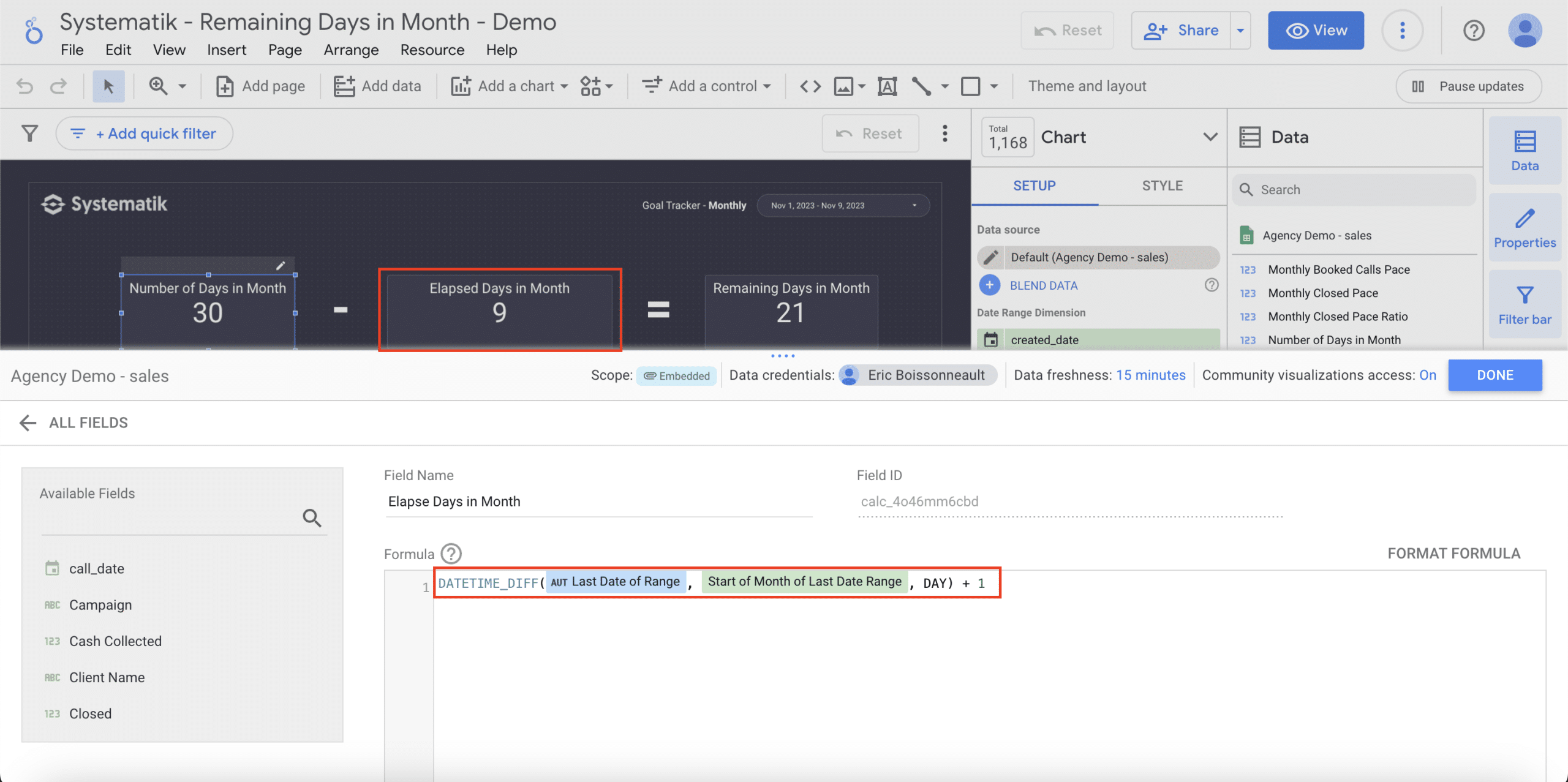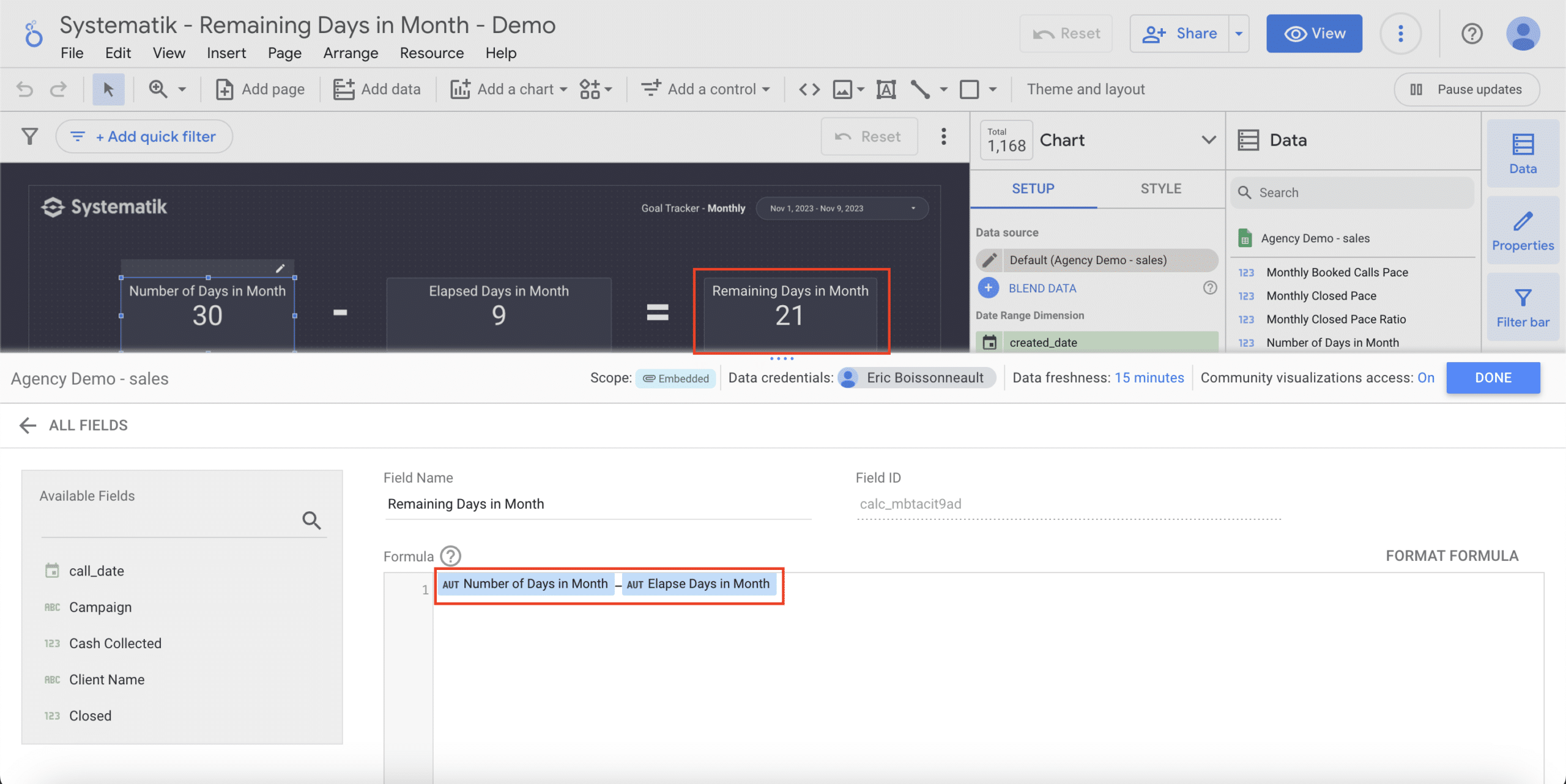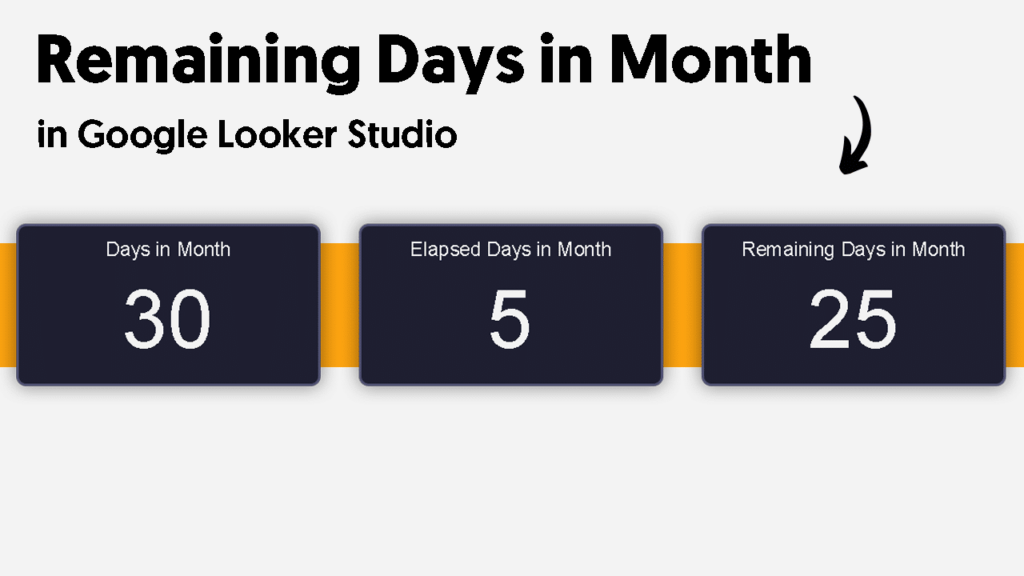Number of remaining days in a month in looker studio
This tutorial will teach you how to calculate the remaining days in a month, the total days, and the days that have already passed. By learning these techniques, you can effectively track and visualize important time-related metrics, improving your data analysis abilities in looker studio.
Step-by-step guide with examples
Step 1: Set up your scorecard
Start this process in looker studio’s edit mode by either making a new scorecard or copying an existing one. This will be the basis for calculating the total number of days in the current month.

Step 2: Calculate the number of days in the month
To calculate the number of days in a selected month using looker studio, you will need to create a calculated field and use the following formula:
Number of days in month
MAX(DATE_DIFF(
DATE(YEAR(created_date), MONTH(created_date) + 1, 1),
DATE(YEAR(created_date), MONTH(created_date), 1)
))
The formula provided for calculating the number of days in a month in looker studio is designed to work with a date range specified by the created_date field. This field represents a range of dates that may span across two different months. The formula calculates the number of days in the month with the most days within this date range. Let’s break it down step by step for better understanding:
- DATE(YEAR(created_date), MONTH(created_date), 1):
- This part of the formula creates a date representing the first day of the month for the earliest date in the
created_daterange.
- This part of the formula creates a date representing the first day of the month for the earliest date in the
- DATE(YEAR(created_date), MONTH(created_date) + 1, 1):
- This step creates a date representing the first day of the month following the latest date in the
created_daterange. - If the range ends in december, it rolls over to january of the next year.
- This step creates a date representing the first day of the month following the latest date in the
- DATE_DIFF(…, …):
- The
DATE_DIFFfunction calculates the difference in days between the two dates created in the previous steps.
- The
- MAX(…):
- The
MAXfunction is used to ensure that the formula returns the number of days in the month with the most days within thecreated_daterange. This is particularly important when the range spans across two different months.
- The
In summary, this formula calculates the number of days in the month with the most days within the date range specified by created_date. It does this by determining the first day of the month for the earliest date and the first day of
Step 3: Calculate elapsed days in the month
This step is about finding out how many days have passed in the selected month. You’ll need to create two fields: one to determine the last date in your selected range and another for the start of the month of this last date. This approach ensures that the calculation is accurate regardless of whether you’re looking at the current month or a historical one. For example, if the last date in your range is november 5, 2023, the elapsed days would be five. Even if the start date is in october.
The final step is to determine how many days are left in the month. This is done by subtracting the elapsed days from the total days in the month. So, if there are 30 days in november and 5 days have elapsed, you have 25 days remaining. To do so, you’ll need to create 3 calculated fields.
Last Date of range
MAX(created_date)
Start of month of last date range
DATETIME_TRUNC(Last Date of Range, MONTH)
Elapsed days in month
DATETIME_DIFF(Last date of range, start of month of last date range, DAY) + 1

The first field captures the beginning of the month of the last date, while the second calculates the days passed. This method ensures accuracy for any selected date range, not just the current month.
Step 4: Calculate the remaining days in the month
The final step is to find out how many days are left in the month. This is done by subtracting the elapsed days from the total days in the month.
Number of days in month - elapsed days in month

Conclusion
By following these steps, you can create a scorecard that updates automatically based on the date range you choose. This scorecard is a useful tool for tracking progress throughout the month.
In future tutorials, we will learn how to use this scorecard in a monthly goal tracker, which will help you set and monitor targets based on the number of days that have passed and the number of days remaining in the month.




